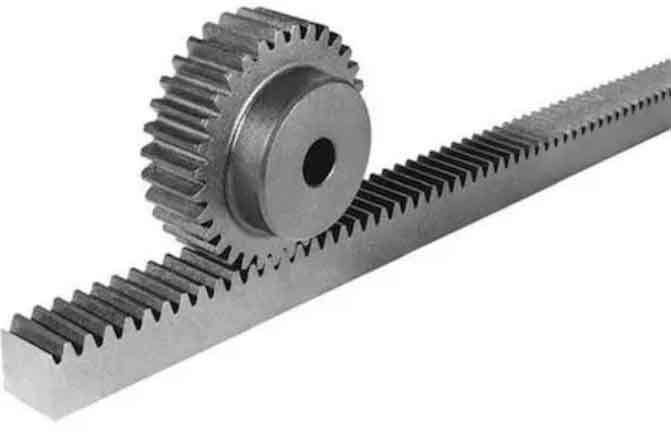
Designing an efficient rack and pinion gear mechanism involves careful consideration of various factors to ensure optimal performance and reliability. Here are some key aspects to focus on during the design process:
1. Gear Geometry and Tooth Profile:
The geometry and tooth profile of both the rack and pinion gears play a crucial role in the efficiency of the mechanism. Designing the gear teeth with appropriate pressure angles, addendum, and dedendum values helps to minimize friction and ensure smooth engagement and disengagement between the gears.
2. Load Distribution:
Even load distribution across the gear teeth is essential to prevent premature wear and ensure the longevity of the mechanism. Proper gear sizing, material selection, and tooth profile design are critical factors in achieving balanced load distribution.
3. Backlash Control:
Minimizing backlash, which is the play or clearance between the gears, is important for maintaining accurate positioning and reducing unnecessary vibrations. Proper tooth engagement and careful assembly techniques help to minimize backlash in the mechanism.
4. Lubrication:
Appropriate lubrication is crucial to reduce friction, wear, and heat generation in the gear system. Adequate lubrication ensures smooth operation and prolongs the life of the gears. Consideration should be given to selecting the right lubricant and designing effective lubrication systems for optimal performance.
5. Material Selection and Heat Treatment:
Choosing the right materials and applying suitable heat treatment processes are important for achieving durability and strength in the gear system. The materials should have high wear resistance, sufficient hardness, and good fatigue properties to withstand the loads and operating conditions.
6. Precision Manufacturing and Assembly:
Precision manufacturing techniques, such as CNC machining and gear grinding, should be employed to achieve accurate gear profiles and tight tolerances. Proper assembly techniques and alignment are critical to ensure smooth meshing and minimize losses due to misalignment or deformation.
7. Structural Rigidity and Support:
The rack and pinion gear mechanism should be designed with adequate structural rigidity and support to minimize deflection and maintain precise linear motion. Stiffness considerations should be taken into account in the design of the mounting and support structures.
8. Efficiency Analysis and Optimization:
Efficiency analysis, using analytical methods or computer simulations, can help identify areas for improvement and optimization in the design. Analyzing factors such as friction losses, contact stresses, and power transmission efficiency can guide design modifications for better performance.
9. Maintenance and Serviceability:
Design the mechanism to allow for ease of maintenance and serviceability. Consider access points for lubrication, inspection, and potential replacement of worn components to ensure longevity and minimize downtime.
By considering these factors and employing sound engineering principles, designers can optimize the efficiency and reliability of rack and pinion gear mechanisms. It is essential to iterate and refine the design based on analysis, testing, and real-world feedback to achieve the desired performance characteristics for the specific application.
